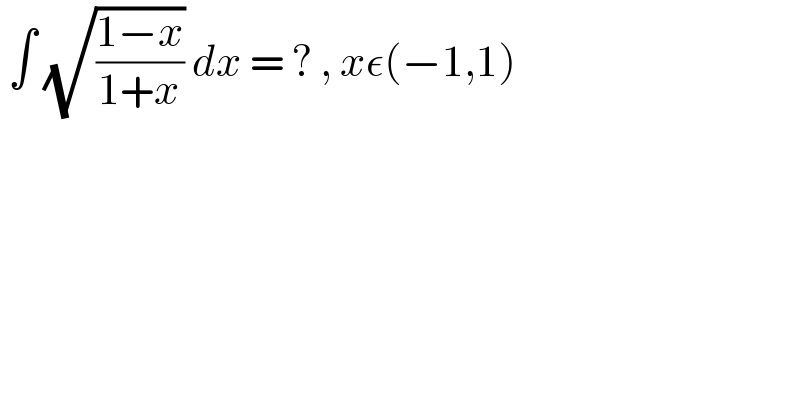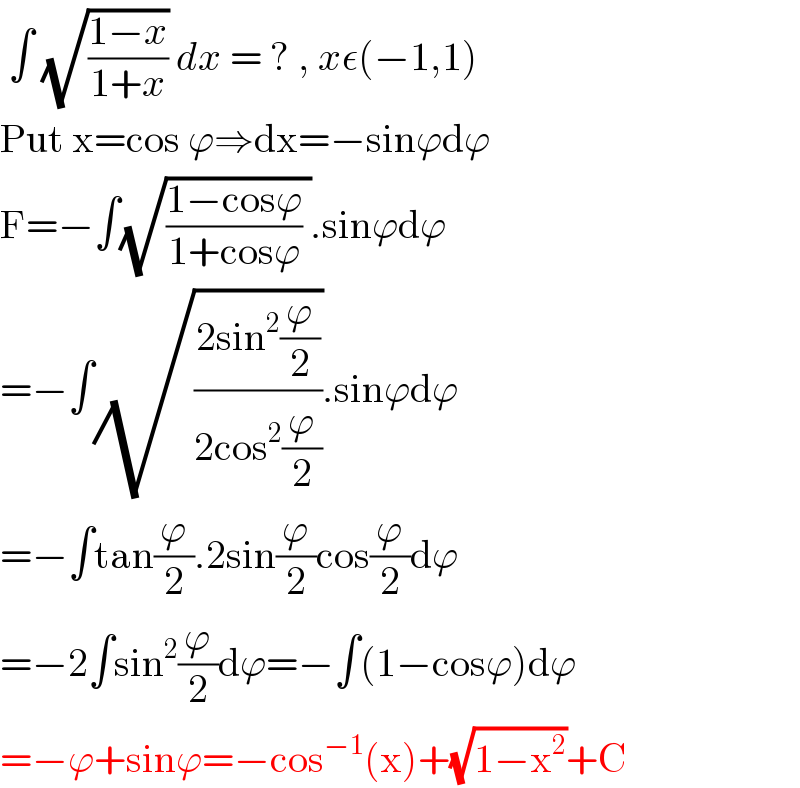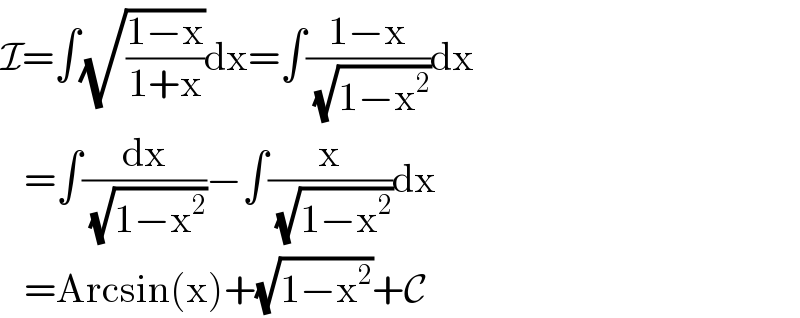
Question and Answers Forum
Question Number 119920 by bramlexs22 last updated on 28/Oct/20

Answered by mathmax by abdo last updated on 28/Oct/20

Answered by 1549442205PVT last updated on 28/Oct/20

Answered by bobhans last updated on 28/Oct/20
![∫ (√((1−x)/(1+x))) dx =? ,x∈(−1,1) K=∫(√((1−x)/(1+x))) dx [ let (√(1+x)) =1+ t ] 1+x = 1+2t+t^2 ⇒dx = (2+2t) dt K=∫ ((√(1−2t−t^2 ))/(1+t))(2+2t)dt = 2∫ (√(2−(1+t)^2 )) dt=2∫ (√(((√2))^2 −(1+t)^2 )) dt by substituting 1+t=(√2) sin w K=4∫cos^2 w dw = 4∫((1/2)+(1/2)cos 2w)dw K=2w+sin 2w + c K=2arc sin (((1+t)/( (√2))))+2(((1+t)/( (√2))))(((√(1−2t−t^2 ))/( (√2))))+c K=2arc sin ((√((1+x)/2)))+(√(1−x^2 )) + c](Q119925.png)
Answered by Ar Brandon last updated on 28/Oct/20

Answered by Dwaipayan Shikari last updated on 28/Oct/20

